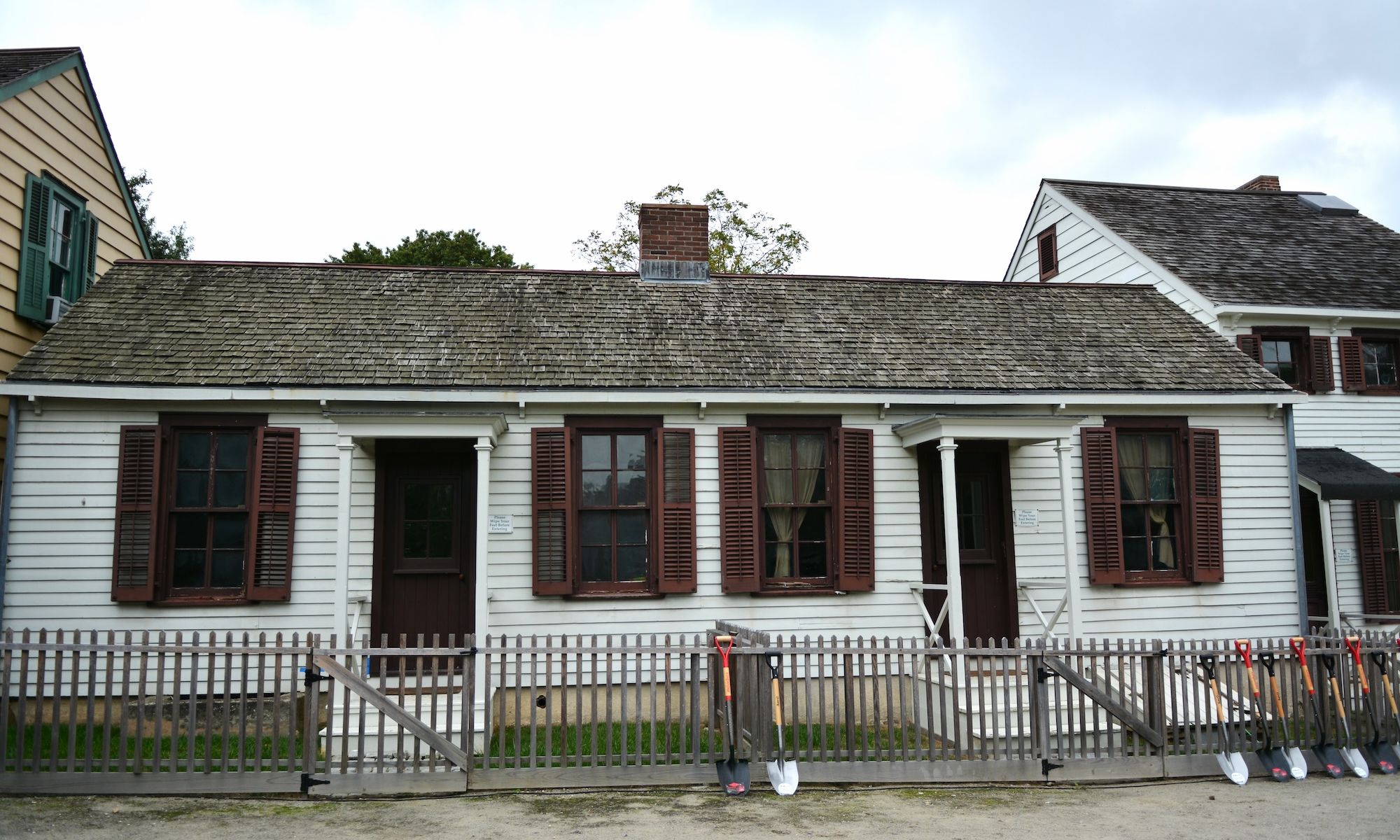The Hunterfly Road Houses at Weeksville Heritage Center, Brooklyn Photo: Courtesy the New York City Department of Design and Construction
A groundbreaking event on 3 October kicked off a $3.9m restoration project for the three historic houses at Brooklyn’s Weeksville Heritage Center. The structures are the last physical remnants of one of the largest free Black communities established before the American Civil War.
“These houses are from the mid-19th century, between 1840 and 1880, so while it’s great that they’re still standing, and I think that speaks to the construction standards of that time, they definitely need work,” Raymond Codrington, the president and chief executive of Weeksville Heritage Center, tells The Art Newspaper.
The project is focused on the Hunterfly Road Houses—named for a now-gone thoroughfare they were built to face—and is managed by the New York City Department of Design and Construction for the New York City Department of Cultural Affairs. This will be the most comprehensive restoration to the structural integrity of the houses since the site opened as a museum in 2005. Work will include renovations on the exteriors (façades, roofs, porches, windows and doors) as well as other improvements for maintaining the houses.
According to Codrington, the plan is to keep the site largely open to visitors throughout the project, which is expected to be finished by the spring of 2026. Along with the exterior restoration of the houses—which were designated as a New York City Landmark in 1970—there will be improvements such as outdoor lighting, upgraded plumbing, enhancements to the video security system and a climate-controlled cellar to hold and preserve historic items.
“It’s great that it’s being done as one project versus piecemeal for us,” Codrington says. “You’re always trying to stay ahead and be more proactive around historic and cultural preservation.”
The Hunterfly Road Houses at Weeksville Heritage Center, Brooklyn Photo: Courtesy the New York City Department of Design and Construction
Although the wood-frame houses now appear as anachronisms, they were once part of a vibrant Black community. Weeksville was founded on land purchased in 1838 by a formerly enslaved man named James Weeks in the area that now straddles the neighbourhoods of Crown Heights and Bedford-Stuyvesant. Slavery was abolished in New York State in 1827, and the site drew people from around the East Coast. Along with sheltering those fleeing slavery in the South, it was a haven during times of racial violence in the North, including the 1863 draft riots in Manhattan. The solidity of the homes, with their parlours and fireplaces, reflects the town’s status as self-sufficient and flourishing, with businesses, schools, churches and a newspaper.
“The part that’s intangible is that the spirit of those people that built that community is still with us,” Codrington says. “When you come here, you feel something.”
Weeksville continued as a community into the 20th century, but urban renewal and absorption into the city's surrounding neighbourhoods led it to almost vanish from memory.
“We are constantly, as New Yorkers, walking over the contributions, achievements and lives of New Yorkers past,” says Prithi Kanakamedala, a public historian and author of the new book Brooklynites: The Remarkable Story of the Free Black Communities that Shaped a Borough. “So often, many of their contributions have been erased from our city’s landscape through development, gentrification and displacement—especially for New York’s Black and brown communities.”
In 1968, the local historian James Hurley identified four surviving structures still resisting the modern street grid. One of these houses was lost to a fire in the 1990s; the rest are the Hunterfly Road Houses that stand at Weeksville Heritage Center today. The restoration project is aimed at ensuring these three structures endure far into the future, reminding visitors of the resilience of a Black community that forged a refuge decades before slavery would be abolished in the US as a whole in 1865.
“It’s extremely important for communities of colour to engage in preservation efforts,” Codrington says. “The more that we can do that, the better we are able to tell our own stories from our own perspective. It shouldn’t be seen by anyone as a luxury; it’s a necessity, and places like Weeksville demonstrate that. It’s a story about Brooklyn, but it’s a broader story about building a community, self-determination, creating a safe space, freedom and choice. Historic preservation is much bigger than buildings.”

